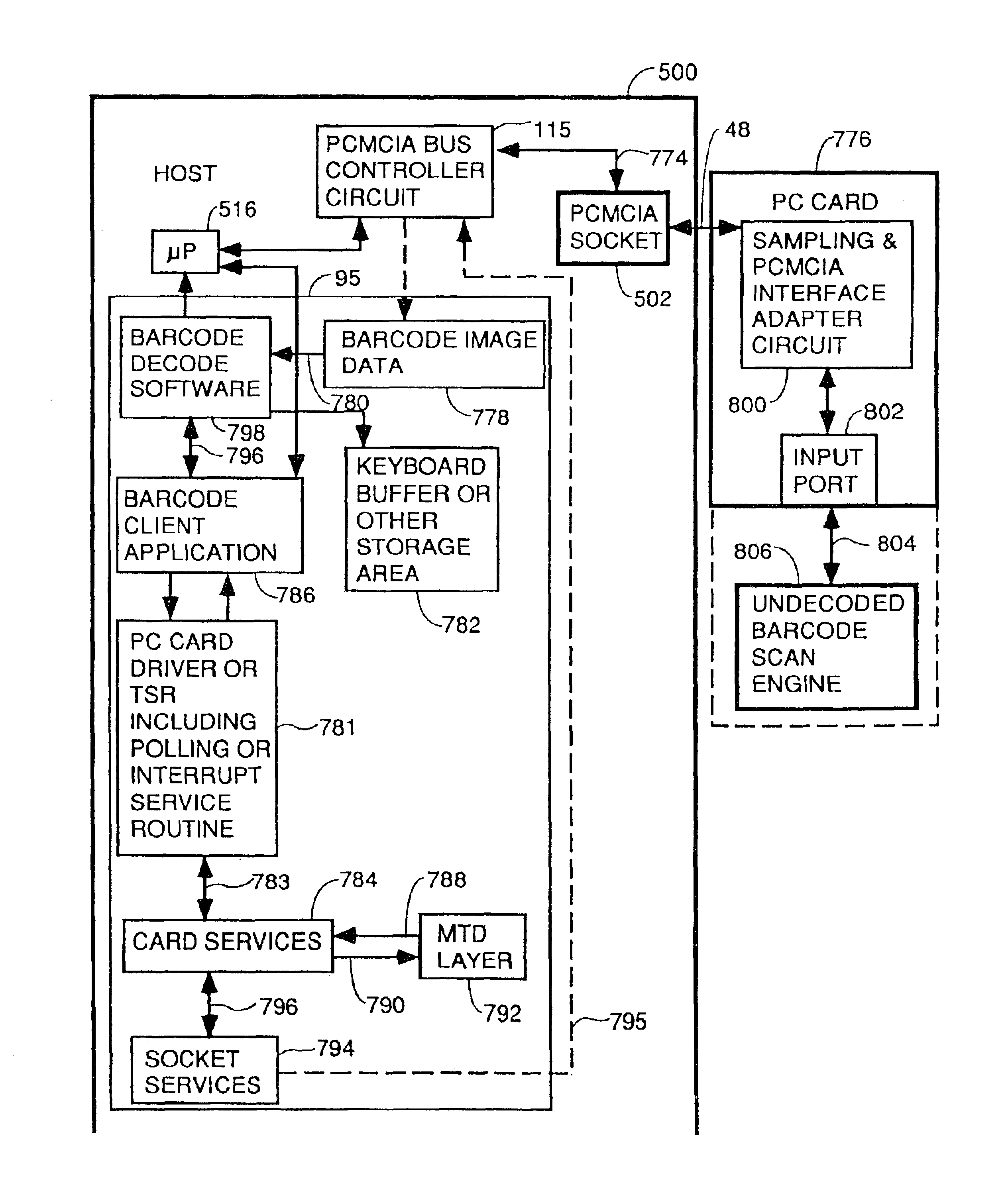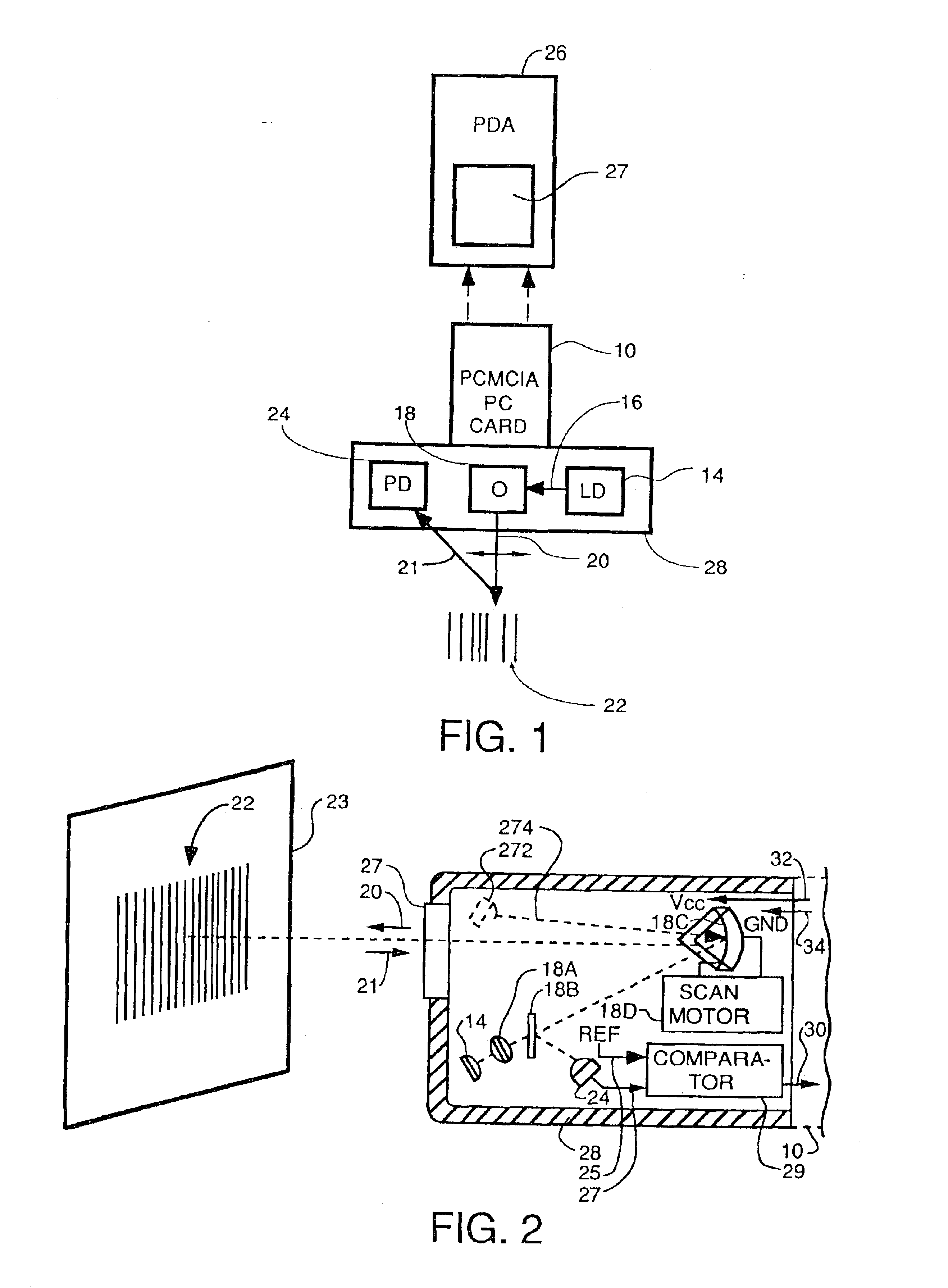PCMCIA interface card for coupling input devices such as barcode scanning engines to personal digital assistants and palmtop computers
a technology of input devices and interface cards, applied in the direction of dynamo-electric converter control, instruments, sensing by electromagnetic radiation, etc., can solve the problem that consumers are prevented from using them in custom designed systems
- Summary
- Abstract
- Description
- Claims
- Application Information
AI Technical Summary
Benefits of technology
Problems solved by technology
Method used
Image
Examples
Embodiment Construction
[0056]Referring to FIG. 1, there is shown a diagram of the one species of a portable laser-based barcode scanner peripheral with a PCMCIA PC card interface within with the genus of the invention. The peripheral comprises a PCMCIA defined PC card 10 which has integrated thereon an interface circuit for a portable laser based barcode scanning engine mounted within a housing 13 which is permanently affixed to the PC card. PC cards are small removable peripheral devices for portable computers which are roughly the size of a credit card (2.126″×3.37″) but have different thicknesses. A type I card has a thickness of approximately 3.3 millimeters (mm) while Type II and Type III cards have thicknesses of 5 mm and 10.5 mm, respectively. The PCMCIA “PC card” standards incorporated by reference herein cover physical dimensions, pin assignments, electrical specifications, protocols and file formats. PC cards interface with 8 and 16 bit buses and support physical access to up to 64 megabytes of ...
PUM
 Login to View More
Login to View More Abstract
Description
Claims
Application Information
 Login to View More
Login to View More - R&D
- Intellectual Property
- Life Sciences
- Materials
- Tech Scout
- Unparalleled Data Quality
- Higher Quality Content
- 60% Fewer Hallucinations
Browse by: Latest US Patents, China's latest patents, Technical Efficacy Thesaurus, Application Domain, Technology Topic, Popular Technical Reports.
© 2025 PatSnap. All rights reserved.Legal|Privacy policy|Modern Slavery Act Transparency Statement|Sitemap|About US| Contact US: help@patsnap.com



